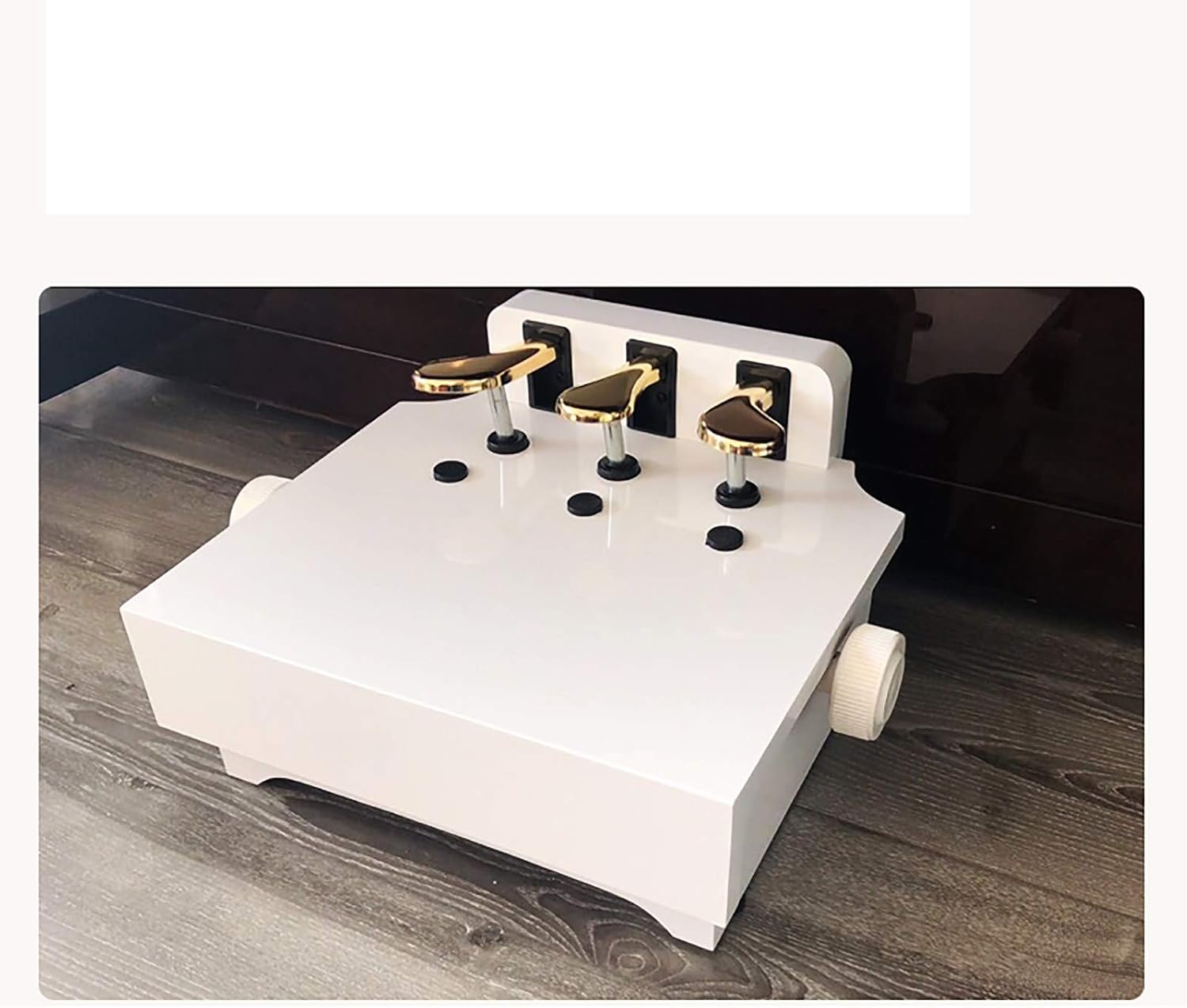
Piano Pedal Extensions,Steel Auxiliary Piano Pedal Extenders for Children with 3 Pedals Adjustable Piano Pedal Extension Bench for Beginners and Children,White
FREE Shipping
Piano Pedal Extensions,Steel Auxiliary Piano Pedal Extenders for Children with 3 Pedals Adjustable Piano Pedal Extension Bench for Beginners and Children,White
- Brand: Unbranded

Description
David Rowland, ed. (19 November 1998). The Cambridge Companion to the Piano. Cambridge University Press. p.33. ISBN 978-0-521-47986-8. OCLC 1022679478. Benchworld P2: Benchworld P2 PE Wooden Piano Pedal Extender - Pedals - Accessories - Pianos & Keyboards | Cosmo Music Cosmomusic In this article, we’ll go through the three piano pedals on both upright and grand pianos, and discuss what each one does and when you might use it. Although most piano players instinctively knowow what the right pedal does, the middle and left foot pedals are often misunderstood by a large percentage of beginner students and hobbyist players. Read on to find out more and increase your knowledge of the acoustic piano! Piano Pedals Grand Pianos To properly identify the components of FIG. 3, reference numerals identical to those used in connection with the leg 34 have been employed.
Three Pedal Design: The bench comes with three pedals, replicating the standard piano pedals, allowing young learners to experience playing with the same functionality as a full-sized piano. The FZONE Sustain Pedal for MIDI Keyboards Digital Pianos Foot Pedal with 6.6FT Extension Cable and Polarity Switch is a top choice for those seeking a reliable and versatile sustain pedal. With its upgrade chip, wide compatibility, and overall quality, this pedal is a valuable addition to any keyboard or digital piano setup. The extender will also have a mechanism for adjusting the height so that it can be used for children of varying sizes. Are piano pedal extenders worth it? Compare the sitting position of this pianist with the other piano in the above video. Where is this pianist sitting? How close are his arms to the piano? How restricted is he in his movement? The piano pedal extension claimed in claim 4 wherein the shank portion of said plurality of pedals is longitudinally slotted, said shank portion being slidably positioned in a channel member horizontally pivoted to said pedal box at a first end having adjacent a second end a screw alignable with the slot in the shank of its respective pedal, said screw being coupled beneath said pedal shank to its respective connecting shaft link.
Customer reviews
Behning & Sons – Pedal PLUS Do, Piano Foot Pedal Extender for Kids & Short Adults | Easy Height Adjustable 1.5” to 5.2” in 0.2” increments | Sturdy & Durable Throughout his lifetime, Ludwig van Beethoven owned several different pianos by different makers, all with different pedal configurations. His pianos are fine examples of some experimental and innovative pedal designs of the time. In 1803, the French piano company Erard gave him a grand, "[thought to be] the most advanced French grand piano of the time... It had... four pedals, including an una-corda, a damper lift, a lute stop, and a moderator for softening the tone." [33] Bie, O. (1899). A History of the Pianoforte and Pianoforte Players, London: J. M. Dent & Sons, Ltd, 136. The only piano Mozart ever owned was one by Anton Walter, c. 1782–1785. It had two knee levers; the one on the left raised all the dampers, while the one on the right raised only the treble dampers. A moderator stop to produce a softer sound (see Other pedals, above) was centrally above the keyboard. [27] The moderator stop was popular on Viennese pianos, and a similar mechanism is still sometimes fitted on upright pianos today in the form of the practice rail (see Sostenuto pedal, above). Joseph Banowetz states that for the bassoon pedal, paper or silk was placed over the bass strings to create "...a buzzing noise that listeners of the day felt resembled the sound of the bassoon." [14] The buff stop and cembalo stops seem similar to each other in method of manipulation and sound produced. The buff ("leather") stop [13] used "...a narrow strip of soft leather ... pressed against the strings to give a dry, soft tone of little sustaining power." [4] The cembalo stop pressed leather weights on the strings and modified the sound to make it resemble that of the harpsichord. [15] Johannes Pohlmann used a swell pedal on his pianos to raise and lower the lid of the piano to control the overall volume. [16] Instead of raising and lowering the lid, the swell was sometimes operated by opening and closing slots in the sides of the piano case. [15]
After their invention, pedals did not immediately become the accepted form for piano stops. German and Viennese builders continued to use the knee levers for quite some time after the English were using pedals. Pedals and knee levers were even used together on the same instrument on a Nannette Streicher grand built in Vienna in 1814. This piano had two knee levers that were Janissary stops for bell and drum, and four pedals for una corda, bassoon, dampers, and moderator. [32] Beethoven and pedals [ edit ]These extenders fit nicely over your true pedals and are perfect for the youngest piano students, whose feet can’t reach the floor yet! The Soarun Adjustable Piano Pedal Extender Bench for Kids is constructed with high-quality ABS material, providing durability and longevity. Its sturdy design ensures stability during piano playing, allowing children to concentrate on their music without worry.
- Fruugo ID: 258392218-563234582
- EAN: 764486781913
-
Sold by: Fruugo
